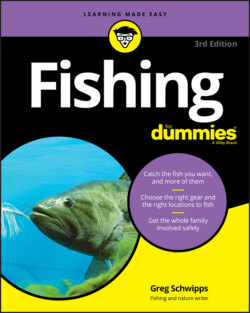Читать книгу Fishing For Dummies - Greg Schwipps - Страница 111
Carp
ОглавлениеThere are approximately 200 species in the minnow family, and most of them are what you’d expect: They’re, well, minnows. One exception deserves mention in this book because it offers anglers great sport: the common carp. Carp were abundant in Europe (Aristotle mentioned them in 350 B.C.), but their American story began in 1876 when they were imported from Germany. Carp spread rapidly and now exist almost everywhere. They prefer warm water streams, rivers, and lakes, where they feed on everything from insects and crustaceans to mollusks. Anglers take them with natural baits like corn, grasshoppers, and worms, and fly fishermen can take them on flies. They grow large — more than 70 pounds — and fight like crazy when hooked. Figure 4-11 shows a carp, which really looks like an overgrown goldfish.
© John Wiley & Sons, Inc.
FIGURE 4-11: The common carp is a big, deep-bodied fish, capable of testing even stout gear.
Don’t confuse the common carp with the Asian carp that leap into boats. Asian carp (a term that includes both silver and bighead carp) are an invasive species that is currently damaging rivers large and small. Asian carp are filter feeders, so you won’t likely hook one on a line. But Asian carp have become quite popular as fly rod quarry in the western U.S. No harm in killing them either. You’re doing the indigenous fish a favor.
Asian carp don’t like the vibration caused by boat propellers, so anglers motoring up streams and rivers might be shocked to see large fish (over twenty pounds) leaping into the air around the boat. They outproduce other native fish and eat the plankton that other larval fish need.
